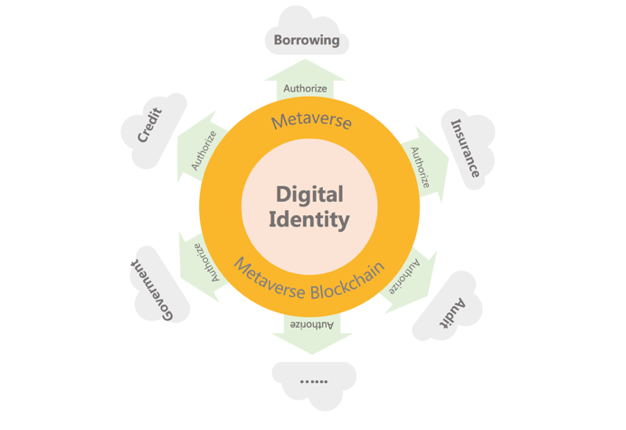There are three types of digital identity. These are transaction record statistics, asset information statistics and risk assessments. Is my address or the address of my counterparty abnormal? I can request for and inquire into the digital identity information of the counterparty, allowing credit records to be proved. Through the three points mentioned above, can we tell what kind of identity can be built? To sum up, we can actually build a fully autonomous identity system by employing encrypted blockchain technology. The system is capable of providing an excellent infrastructure and a tamper-proof ledger. The entity holding an identity could be an individual or institutions. This new decentralized digital identity is entirely controlled by oneself. Which fields can digital identities based on blockchain technology be applied to? We can use these identities to create a strong uniform digital identity system in the credit, borrowing, insurance and audit sectors as well as in government departments.

For example, different credit data channels exist in the credit sector, but digital identities can provide a uniform digital portrait. Data from different sectors will be collected to form a unified portrait that can serve all industries and cannot be tampered with. We call this a principal data source. Principal data sources can open up all application interfaces, covering more industries and individuals and linking together previously isolated islands of value. However, there are still a lot of challenges to be solved. Like the internet, the blockchain is also facing privacy issues. Although the information online is anonymous, with enough information, it is possible to trace which addresses belong to which users and which addresses have been used for transactions. In fact, not all anonymity on the blockchain is good. I think that the importance of anonymity lies in identity rather than transactions. It’s not about focusing on the anonymity of a transaction, but on the anonymity of identity. If digital identity plans to enter the underlying infrastructure of blockchain, it must solve the anonymity issue.
The second issue is about authorization. When A authorizes B to perform an operation, some information disclosure is inevitable. Say for instance that I authorized someone to help me open a bank account — he has to know my identity information. Over time, more people will know my personal information, and they may even know the information on my education certificate, which is quite terrible. Especially when the commercial sector’s entire network is visible, it is of paramount importance that we ensure the privacy of authorization processes. As for the anonymity of the authorization process, it can be achieved through zero-knowledge proofs together with multi-signature and multi-party signatures. Thus, designing this sort of complete model is very necessary.
Thirdly, identity is multi-faceted. For instance, a person’s professional identity is a lawyer; he may attend a parents’ meeting as parent; at the same time, he may serve as the president of some community. How can the multi-faceted nature of identities be reflected on the blockchain? Furthermore, identity has an element of timeliness which must also be reflected on the blockchain. For example, I may be the president of some community this year, but I may step down the next year.
I think the three questions mentioned above will be solved by digital identity in the near future.